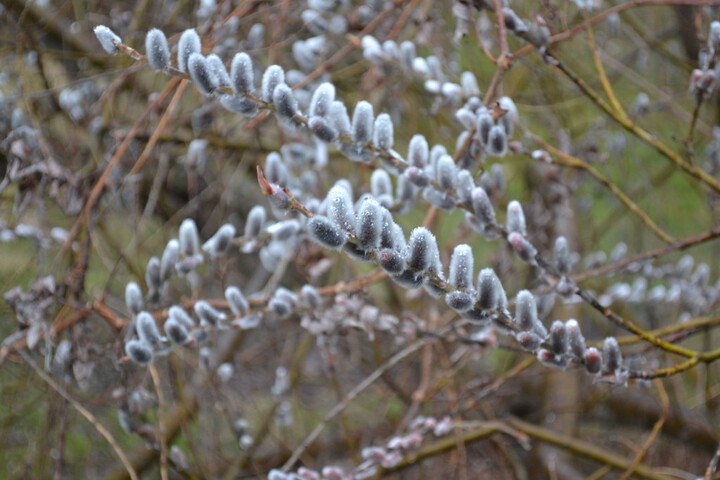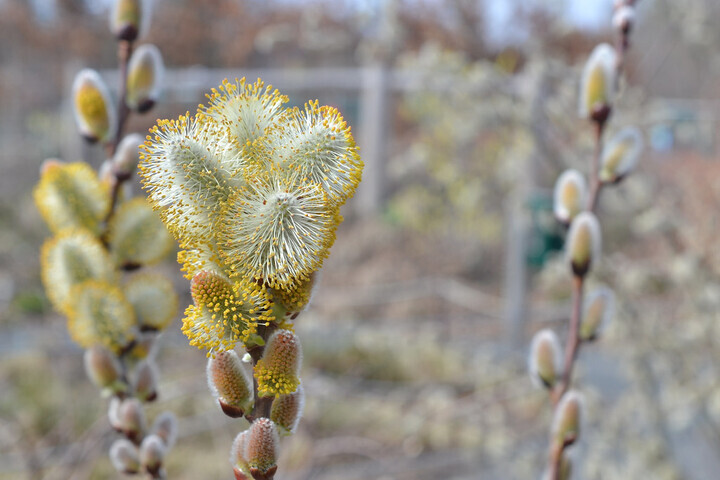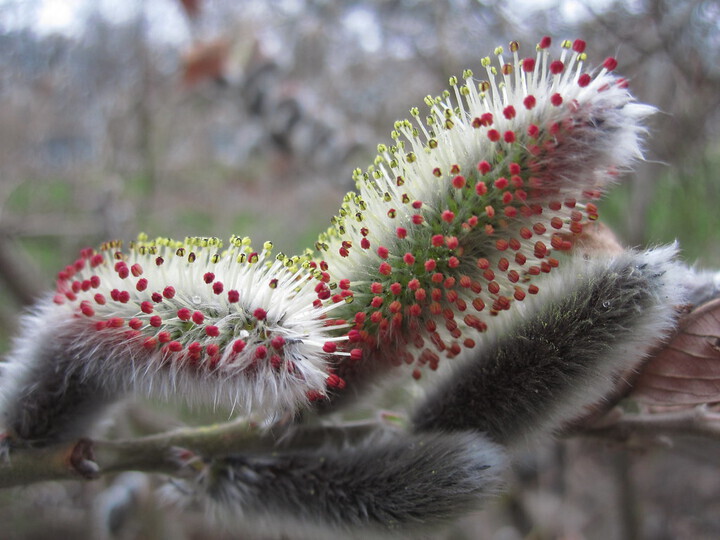At the tail end of winter, fuzzy nubs start to appear along the branches of pussy willows. These soft silver tufts—as well as the plant itself—are named for their resemblance to tiny cats’ paws, and they feel so much like fur that young children often wonder if they are animals instead of plants. What are those little nubs? Are they seeds? Fruits? And why are they fuzzy?
They're actually flowers just before they fully bloom. The soft coating of hairs acts as insulation to protect these early bloomers from cold temperatures. The species most commonly called pussy willow in the Northeast, Salix discolor, is a small, shrubby species of willow that can be found dotting wetlands and moist woods throughout much of North America. Most other willows make similar flowers, and since they’re among the very first to bloom, they’re especially delightful—they signal the last throes of winter and the brink of spring.

Even in full bloom, willow flowers hardly look like flowers at all. They have no petals or showy colors. Nor do they have any fragrance. Such flowers are called catkins, also named for cats, in this case for their tails (from the old Dutch word for kitten katteken). Many other trees and shrubs, such as birch and beech, also produce catkins.

Catkins usually don’t rely on pollinators to spread their pollen. Instead they simply release it into the wind, where it may or may not land on the female flower parts. In order to hit their targets, the catkins must produce a tremendous amount of pollen. (Wind-pollinated trees like these are the culprits of many a spring sneeze.)
More: No need to wait for spring. Enjoy these beautiful buds right now.
Pussy willows have been cultivated to produce a range of different catkin colors. Over the next few weeks, a parade of these blossoms will be on display at the southern end of BBG—in the Discovery Garden, the newly opened Water Garden, and along the nearby brook. Look for the fantastical pink pompoms of the Japanese pink pussy willow, the creepy, gothic-looking black pussy willow, and the rose-gold pussy willow, whose blossoms seem to glow.

Pussy willows are dioecious, meaning there are both male plants and female plants. Only male plants produce the fuzzy flowers. Home gardeners may be disappointed if they wind up with a female tree, but the flowers on female plants are equally funky—they just look more like greenish hairy caterpillars. Look for both blooming over the coming season.
 TRY THIS AT HOME
TRY THIS AT HOME
Most cut pussy willow stems are in a sort of time warp—dried at their peak fuzziness, and never allowed to fully flower. But if you keep fresh-cut pussy willows hydrated, you can see the whole flowering cycle and even the leafing-out process. Buy a healthy-looking bunch (look for flexible, greenish stems that don’t feel brittle or look shriveled), and place in a vase near a window, changing the water daily. You can add a little flower food if you have some.
Watch for new flower buds to cast off the shiny brown bud scales that surround the flower. When the flowers mature, you will see scores of yellow stamens emerge to cover each catkin. A tiny clump of pollen stands at each end. Wait even longer, and you may also see pale green, strappy leaves unfurl from the leaf buds. At this point, your willow stems will be in full spring growth and will need to be planted in soil outdoors to root for an extended experiment. The flexible stems can also be woven into a wreath or recycled in the compost pile.